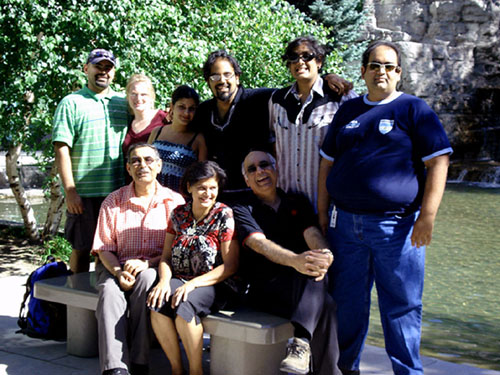 The Trinidad and Tobago Ministry of Health confirmed Friday that four people have died from Swine Flu. And it said all of them had one thing in common - "morbid obesity".
The Trinidad and Tobago Ministry of Health confirmed Friday that four people have died from Swine Flu. And it said all of them had one thing in common - "morbid obesity".At a news conference, officials said three men and one woman died in the Intensive Care Unit of the San Fernando General Hospital this week. Another man also died at the facility, but from seasonal flu. It did not refer to death of ad executive Astra da Costa in Port of Spain earlier this week.
Executive Medical Director of the hospital Dr Albert Persad said the international literature confirms that people who are excessively overweight suffer more severely from the virus.
"So that it is now a very strong contender as a risk factor for people with H1N1 illness to progress to a very severe level," he said.
The four who died in San Fernando were from a relatively small area of Trinidad and epidemiologists are trying to trace the people who had direct contact with the victims.
Persad said all authorities will test the relatives of those who died or who tested positive for the H1N1 virus. He said so far, at least 250 people have been tested in south Trinidad and most tests have been negative.
However he said there are many people across the country who have "mild" Swine Flu.
The opposition has slammed the government for the way it has handled this health matter and has warned that its immunization plan leaves out the majority of citizens.
Read the story: Poor health care puts T&T at risk: UNC
Related: Doctors say TT not equipped to deal with Swine Flu
Read common symptoms for Swine Flu issued by the Public Health Agency of Canada
The medical Director of the San Fernando general Hospital told reporters Friday some "swine flu" victims are turning up at health care facilities with mild symptoms, but he said doctors tracking the flu are reporting that many people are critically ill.
Stephen Ramroop explained that in the very critical stage, victims have respiratory or chest problems, particularly shortness of breath. He said four San Fernando victims had "severe respiratory distress" and were unable to breathe.
Ramroop said people showing such symptoms are immediately put on a respirator or ventilator "to assist with the breathing and are then sent to the Intensive Care Unit, where their vital signs are monitored on a real-time basis."
There is a different protocol for those with mild symtoms. "When you arrive at the department and you complain of any H1N1 symptoms you are directed into the ambulance bay where there is a team of doctors and nurses who will have to examine and make the necessary investigations," Ramroop said.
"If you have any symptoms, you are admitted to the hospital in one of the isolation wards and the doctors and nurses will make all the necessary precautions, including giving you Tamiflu."
He said some cases can be managed at home with a health liaison or district nurse doing checks with the family to see monitor the patient.
Ramroop said hospital staff are fully briefed on how to handle this health threat and have been issued the necessary safety gear. And he said there are other measures in place for public safety.
"We are trying to encourage all the family not to come to visit and limit it to a number of one, especially in areas like ICU," he said.



No comments:
Post a Comment